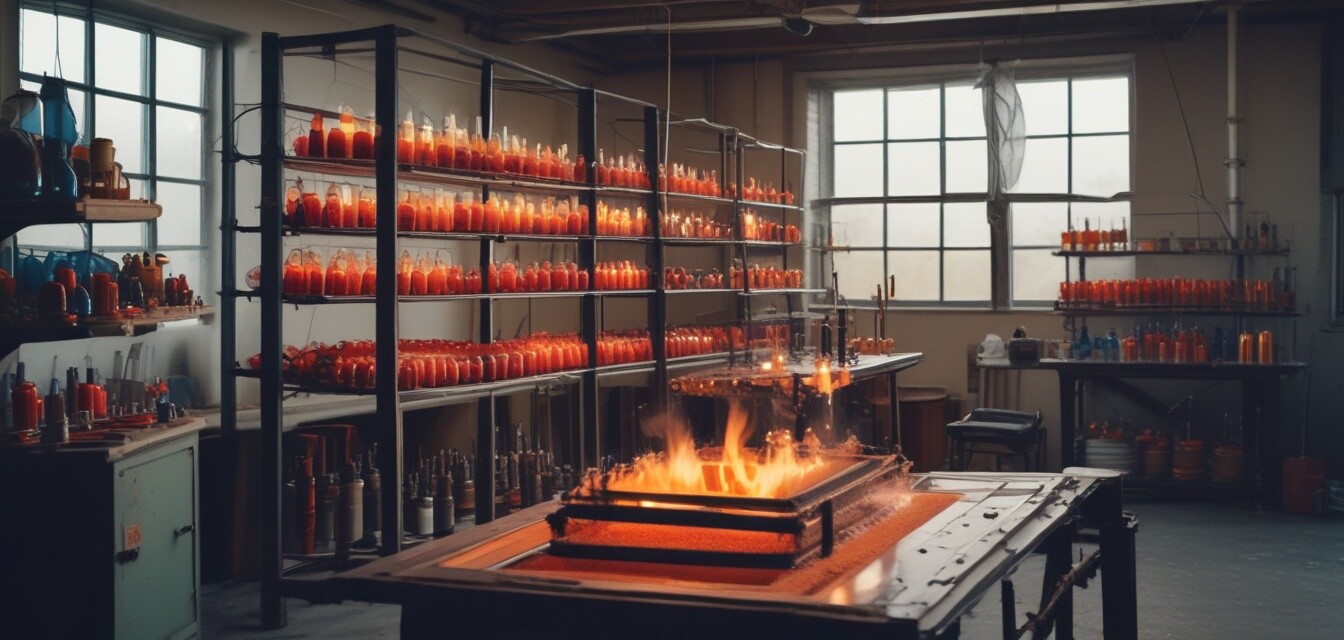
Maintaining a Safe Kiln Environment
Key Takeaways
- Ensure proper airflow around the kiln to prevent overheating.
- Implement effective fire prevention measures in your workspace.
- Always wear protective gear when operating a kiln.
- Regularly inspect and maintain your kiln equipment.
- Educate yourself and others on kiln safety protocols.
Operating a kiln can be an exciting experience for glass artists, but it’s crucial to prioritize safety. Whether you're a beginner or an experienced artist, maintaining a safe environment is essential to ensure not only your well-being but also the integrity of your artistic process. In this article, we’ll explore key strategies for maintaining a safe kiln environment, focusing on airflow, fire prevention, and protective gear for artists.
The importance of airflow
Proper airflow around your kiln is vital for ensuring it operates efficiently and safely. Below are some strategies to enhance airflow:
- Placement: Position your kiln in a space that has sufficient room for air circulation.
- Ventilation: Use vents or windows to allow fresh air to flow and heat to escape.
- Inspect Regularly: Make sure vents and exhausts are not blocked by dust or debris.
- Consider Exhaust Fans: An exhaust fan can help regulate temperature and improve overall safety.
Fire prevention measures
Fire safety should be your top priority when working with kilns. Here are some critical safety measures to incorporate:
- Keep Flammable Materials Away: Maintain a clean workspace free of flammable substances.
- Fire Extinguisher: Equip your workspace with a fire extinguisher and ensure everyone knows how to use it.
- Emergency Plan: Create an emergency plan that includes escape routes and procedures in case of fire.
- Regular Inspection: Regularly inspect your kiln for any signs of wear or faults that could lead to fires.
Protective gear for artists
Wearing appropriate protective gear is crucial for minimizing risks while operating your kiln. Consider the following gear:
| Protective Gear | Purpose |
|---|---|
| Safety Glasses | Protects eyes from debris and bright light. |
| Respirators | Protects lungs from harmful dust and fumes. |
| Heat-Resistant Gloves | Protects hands from burns when handling hot materials. |
| Apron | Protects clothing and skin from spills and sharp edges. |
Regular inspection and maintenance
To ensure safety, it's essential to inspect and maintain your kiln regularly. Follow these maintenance tips:
- Check electrical connections for wear and damage.
- Test temperature controls to ensure they are functioning correctly.
- Clean the interior and exterior of the kiln to remove any debris.
- Refer to the manufacturer's guidelines for specific maintenance schedules.
Educating yourself and others
Everyone working in the area should be educated on kiln safety protocols. Consider the following:
- Host safety training sessions for beginners and experienced artists alike.
- Create easy-to-understand safety manuals and posting them near the kiln.
- Encourage discussions about safety and share experiences to learn from each other.
Conclusion
Maintaining a safe kiln environment is essential for every glass artist. By prioritizing proper airflow, implementing fire prevention measures, wearing protective gear, conducting regular maintenance, and educating yourself and others, you can create a safer workspace. For more tips and product recommendations, check our Glass Kilns blog category where you can discover essential information and resources.
Pros
- Improved safety for artists and workspace.
- Increased efficiency in kiln operation.
- Minimized risk of damage to materials and equipment.
Cons
- Initial setup may require investment in equipment.
- Regular maintenance and checks can be time-consuming.

